It is overland tour to Mt. Wudangshan in Hubei province from Xian. Hubei province is located in mid China connecting many provinces in China by convenient transportation of railway, cruise, and flights......
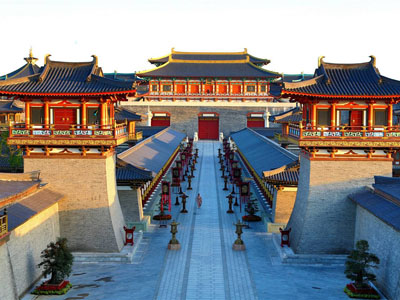
New Year's Day (January 1)
Not as much celebrated as it is in other parts of the world because it is overshadowed by the upcoming Chinese New Year somewhere a month away. However, employees will enjoy a paid day-off. And there will be parties everywhere, in parks, dancing halls and universities where students will leave for the winter vacation and won't be able to celebrate the Chinese New Year on campus.
International Women's Day (March 8)
Interestingly, women employees will get a whole or an half paid day-off on the day while the men are at the mercy of their employers.
Tree-Planting Day (Arbor Day) (April 1)
Highly promoted since the late 70's by the reformist government and yet to become established. It marks the begriming of a greening campaign all over the country during the month each year. There is no paid leave on this day.
International Labor Day (May 1)
No less celebrated than the New Year's Day. Prompted by economic development and commercialization, employees are granted five days paid leave so that they can tour the country and do their shopping. Parades and organized parties on this day have become history.
Youth Day (May 4)
A day in memory of the first mass student movement in 1919 - a movement touched off by the then Chinese government that gave in to the Japanese government's attempt to colonize Shandong Province . It is also an anti-Confucius movement as well as one that promoted the western scientific and democratic ideas. Today, youth rallies are rare, but parties and picnic outings are gaining popularity.
Children's Day (June 1)
It is the most memorable day of Chinese children. Access to almost all entertainment and educational facilities such as cinemas, parks and children's museums is free to them. Elementary schools throw celebration parties while parents shower them with presents.


The CCP's Birthday (July 1)
It marked the founding of the Chinese Communist Party in 1921 in Shanghai . It is usually characterized by front page editorials from major government news pagers. Employees do not have a paid leave day.
Army's Day (August 1)
A communist-led nationalist army staged the first armed uprising in Chinese communist history against the Nationalists on August 1, 1927. It was regarded as the beginning of the Red Army (later the People's Liberation Army). Now the anniversary is often used to promote better relationships between the army and civilians, a tradition believed to have helped it beat the Nationalists during the civil war in 1949. It is not a paid-leave day.
Teacher's Day (September 1)
It was started in the early eighties as an effort to reverse the anti-intellectual sentiment nurtured by the"Cultural Revolution". It has become an established holiday. However, it is yet to become a paid-leave day for the teachers.
National Day (October 1)
It is the anniversary of the founding of the People's Republic of China in 1949 in the wake of routing the Nationalists who have since taken refuge in Taiwan . Celebrations of the day went through different phases in history. Before 1960s, there were regular parades during the day and firework shows during the night in major cities. Later, the celebration was reduced to mere organized parties in parks. Beginning from the 1980's two grand parade happened in Beijing , each in the Deng Xiaoping and Jiang Zemin eras. Beginning from the late 1990s, Chinese employees have been given a week-long paid leave so that they can travel and spend to pump more money into the country's economic development. Both May 1 and October 1 weeks were called huangjinzhou, or "a week of gold." Fireworks and parties are integral part of the first day of the week of gold.
Spring Festival, or Chinese New Year (1st day of the 1st lunar month)
The biggest and most celebrated festival in China and part of East and South East Asia . It is as important to the Chinese as Christmas is to Westerners.
Lantern Festival or Yuanxiao Festival (15th day of the 1st lunar month)
This day features lantern displays, lion and dragon dances, and eating Yuanxiao (ball-shaped sweet rice dumplings with delicious stuffing.). The Lantern Festival also marks the end of the Chinese New Year season.
Qing Ming (Pure & Bright in Chinese)
Originally it was a celebration of spring. People used to customarily go out on an excursion to "tread grass". Later it became day dedicated to the dear departed. Tidying up ancestors' tombs is its major big event.
Duan Wu (Dragon Boat) Festival (5th day of the 5th lunar month)
Said to be in memory of a great patriot poet of the then State of Chu during the Warring States period (475-221 B.C.), Qu Yuan (Ch'u Yuan), who drowned himself to protest his emperor who gave in to the bully State of Chin. For fear that fish may consume his body, people of Chu threw launched their boats and started throwing rice dumplings wrapped in bamboo leaves into the river where he was drowned to feed the fish. Now the big event of dragon boat contest may be a legacy of such activity. People today still eat the bamboo-leave rice dumplings on the occasion today.
The Seventh Eve (7th day of the 7th lunar month)
It is a traditional holiday almost lost to the younger generations today. It originates from a beautiful legend about a cowboy and a fairy who were cruelly separated and reunited once each year on this happy sad occasion. A more detailed story is forthcoming.
Mid-Autumn Festival (15th day of the 8th lunar month)
It is second only to the Chinese New Year in significance. The moon on this day is the fullest and largest to the eye. Viewing it by the whole family while feasting on good wine, fruits and moon-cakes features the night event. There is also a beautiful story behind it. Children are told that there's fairy on the moon living in a spacious but cold crystal palace with her sole companion, a jade rabbit. A heavenly general and friend would occasionally pay her a visit, bringing along his fragrant wine. She would then dance a beautiful dance. The shadows on the moon made the story all the more credible and fascinating to the young imaginative minds.
Chongyang Festival / Elders' Day (9th day of the 9th lunar month)
According to the famous Chinese classic Yi Jing (I Ching), six and nine are both yang, or positive, numbers. Therefore, the ninth day of the ninth lunar month is a day to be celebrated as a Double Yang Festival. It is marked by family outing, particularly going up to the top of a hill. Viewing and admiring juhua (chrysanthemum flowers), decorating houses with zhuyu (cornus officinalis plants), eating double-yang cakes, and drinking chrysanthemum wine are part and parcle of the festival. In 1989, the Chinese government made the festival the Elders' Day to encourage young people to respect their parents.
Laba Jie (8th day of the 12th lunar month)
Most Chinese treat it as a reminder of the approaching Chinese New Year, hardly aware of its Buddhist background. This day is to celebrate Sakyamuni, founder of Buddhism. As he achieved revelation by practicing asceticism, surviving merely on a meal of congee a day, eating a particular type of congee called labazhou is the most important event of this festival.
Jizao Festival or Kitchen God Festival (23rd day of the 12th lunar month)
China has a long history of worshiping fire. After zao (kitchen stove) was invented, the belief in Zao Wangye (Kitchen God) began. Kitchen God is supposed to watch the household where he resides and reports its deeds or misdeeds to Yuhuangdadi (Jade Emperor of Heaven) on the day of the Jizao Festival, a week before the eve of the Chinese New Year. Around the Jizao Festival, people would try to bribe Kitchen God with maltose candy so that, with his sweetened mouth, he would put in a good word for them before Jade Emperor.
Dongzhi Festival or Winter Solstice Festival
This festival originated from the Han dynasty (206 B.C. - A.D. 220). It used to be treated as more important than the Chinese New Year. Today its importance has greatly decreased, and it is celebrated only in parts of the country. The day is celebrated with the eating of huntun (soup dumplings) in North China and mituan (rice-ball dumplings) in the south. The festival is also marked by the worshiping of heaven and ancestors.
Because China has fifty-six ethnic groups, the festivals listed below is but a sample of the variety of festivals and celebrations these ethnic people enjoy. Like the Han Chinese, many of the ethnic groups have more than one traditional festivals. Some even share the traditional festivals with the Han Chinese, such as the Chinese New Year and the Mid-autumn Festival.
The Zhuang's Sanyuesan (Song Festival)
The third day of the third Chinese lunar month, usually in the beginning of April, is the largest of the Zhuang festivals. It features singing in an antiphonal style between young men and young women. The contest can go on for twenty-four hours. It is a great opportunity for young people to find their love. The most remarkable souvenirs to convey a young woman's affection for a young man is xiuqiu, an embroidered silk ball the girl made herself.
The Bai's Sanyuejie (Third Moon Fair)
Sanyuejie, or Third Moon Fair, is the Bai nationality's most important festival. It is also a huge fair for the Bai people. The festival falls on the fifteenth day of the third Chinese lunar month. The festival is marked by singing and dancing to the tune of bajiao (eight-angled) drums with the aid of the prop called bawang whips. The festival also features horse racing, lion dance, and dragon dance.
The Dai (Tai)'s Poshuijie (Water-sprinkling Festival)
The Water-sprinkling Festival happens in the middle of April (the sixth month on the Tai calendar) and lasts from three to five days. It is a favorite festival of the ethnic groups of Tai, Achang, De'ang, Bulang, and Wa. Celebrations include dragon boat racing and water sprinkling. It is believed that the water sprinkle onto someone or even get him or her soaked will bring that person good luck. The tradition of water sprinkling originates from a legend of seven young women who killed a monster that they were forced to marry. They cut its head off with his own hair. However, they had to hold its head by turns because the head would produce flames when it touched the ground. The girls would pour water over the girl who had held the monster's head for the past year in order to wash the monster's blood stains from the girl's clothes.
The Tibetan New Year
The Tibetan New Year starts from the first day of the first Tibetan calendric month, usually in February and occasionally in the beginning of March. As in the Chinese New Year, the Tibetan New Year also is an occasion of family reunion. Preparation for the Tibetan New Year starts from sweeping and cleaning the house. The special food for the New Year's Eve, sounds like "gutu," is boiled flour dough. The dinner is followed by a ritual of exorcising ghosts helped with the firing of firecrackers. The first day is marked by a family dinner of good luck and the worshiping of gods with five grains. Some will go to temples to pray. Visiting relatives and neighbors to extend New Year's greetings starts from the second day and lasts half a month. The third day usually is characterized by religious events and entertainment activities that include furnishing horses with new saddles, horse racing, and tug-of-war.
The Mongolian Nadam Fair
Nadam, meaning "entertainment" in Mongolian, takes place in July or August, a month of sufficient grass and water supply. It is a get-together of Mongolians in China 's regions of Inner Mongolia , Gansu , Qinghai , and Xinjiang. Popular activities of Nadam include wrestling, horse racing, archery, catching horses with loops, and Mongolian chess game. In modern times, some sports like polo. When evening comes, young men and women will dance around bonfires to the accompaniment of the famed Mongolian music instrument known as matouqin, or fiddles with horse heads.
The Yao 's Panwangjie (Festival of King Pan)
Panwang, or King Pan, is the what the Han Chinese believed as the creator of universe named Pangu. Panwang was also Yao people's first ancestor. Every sixteenth day of the tenth Chinese lunar month, Yao people celebrate the Panwangjie with singing the Panwang Song and dancing the long-drum dance. The celebration also include beating decorated clubs and firing fireworks. Today, love songs have also become part of the festivity.
The Yi's Torch Festival
The Torch Festival of the Yi people happens on the twenty-fourth day of the six Chinese lunar month. It is shared by other ethnic groups such as Naxi, Jinuo, Bai, and Lahu though their festivals fall on different days of the same month. The Yi's Torch Festival is marked by good food and rich festival activities, such as bullfight and wrestling during the day and parade with torches in hands during the night. A singing and dancing party around bonfires built with the torches bring the festivity to an exciting end.
The Miao New Year Festival
The Miao's New Year starts from the beginning of the tenth Chinese lunar month, a practice that originated during the Zhou dynasty (1100-476 B.C.). The New Year celebration lasts from five to thirteen days among different tribes of the Miao people. Preparation for the New Year include slaughtering pigs and goats, making sweet rice cakes, and brewing rice wine. The good food is also used to worship ancestors and as presents to neighbors and friends. After the New Year's Eve dinner and worshiping rituals, young men and women begin to parade through villages with singing and lusheng (a pipe music instrument made of bamboo and gourd). Activities of the days that follow may include bullfight, cockfight, horse-fight and wrestling.
The Dong's Huapaojie (Festival of Decorated Cannon Rings)
This Dong festival is also shared by the ethnic groups of Zhuang, Miao, and Mulao. Therefore, it falls on different days in different regions, ranging from the third day of the first Chinese lunar month to the second day of the second month and the fifteenth day of the fifth month. The festival is highlighted by a sport where teams of a dozen or a score of young men from different villages to catch as many decorated metal rings shot into sky by a cannon. It is a game like the American football. Other activities marking the festival include theatrical performances, lusheng (a music instrument of a pipe through a calabash) contest, antiphonal style singing, and cockfight.
The (Buyi) Buoyei's Chabai Singing Party
This event originated three hundred years ago to commemorate the young lovers named Cha and Bai. The Buyi people remember them for their courage, selflessness, and faithfulness. Each twenty-first of the sixth Chinese lunar month, young Buyi men and women from provinces of Guizhou , Yunnan , and Guangxi will converge at the Chabai Square in Xingyi County,Guizhou Province. There, they will have a singing party with as many as fifty thousand spectators. During the party, young men and women will sling kangbao (decorated pouches of grains) at one another, a way to find a boy or girl friend. The flight of hundreds of kangbao in the air is quite a spectacle.
The Moslem Corban Festival
Corban, an Aramaic word meaning "a gift or offering consecrated to God," falls on the tenth day of the twelfth Arabic month, somewhere in August. It is celebrated in China by the ethnic groups of Hui, Uigur, Kazakh, Uzbek, Tajik, Tatar, Khalkh, Sala, Dongxiang, and Baoan. They prepare for Corban by cleaning their houses and cooking all sorts of food. Early morning on Corban, the Muslims will bathe and go to pray in mosques. The Uigurs celebrate the holiday with singing and dancing parties while others may engage in such activities as wrestling, horse racing, and lamb-snatching on horseback.
The Jing's Ha (Singing) Festival
The Ha Festival is the most important holiday of the Jing people. Ha means singing. Every tenth day of June, the Jing people will gather at the hating (singing pavilion) of their villages to go through a four-phase ceremony: greeting gods, holding sacrificial offerings, feasting and singing, and saying farewell to the gods.
The Lisu Knife-pole Festival
The Knife-pole Festival falls on the eighth day of the second Chinese lunar month. It originated from the Lisu people's gratitude for a Han hero for teaching them how to make a knife. The festival is marked by the activities such as climbing a pole embedded with a number of knives and "diving into a fire sea," a test of heat endurance. Each time, five of them step into and out of a pile of smoldering charcoal barefoot. However, none will get burned because of their well-trained skills.
The Jingbo Dancing Festival
Munao Festival is the most important holidays of the Jingpo people to celebrate good harvests and exorcise evil spirits. The word munao means "group singing and dancing" in the Jingpo language. The festival falls on the fifteenth day of the first Chinese lunar month and usually lasts two or three days. Four twenty-meter high wooden poles are erected at the center of a square. The poles stands for fortune, victory, unity and bravery. These poles are at the center of all festival activities and events. The celebration is characterized by mass dancing, with participants in the thousands. The singing and dancing can continue nonstop for two or three days.
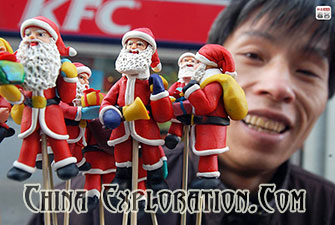

China has become more commercialized and less ideological, and the Chinese are enjoying more relaxed social control. As a result, they have adopted some Western holidays. While Chinese, mostly young people, celebrate them for fun, businessmen see a great opportunity to make money.
Valentine's Day
It has become as big a holiday among the young Chinese as it does in the rest of the world. Greeting cards and flowers, predominantly roses, are sold in the millions. The Chinese, however, limit the present giving to their spouses, lovers, and sex partners while in the West, candies can be given to friends and colleagues. This difference may be attributed to the mis-translation of Valentine's Day as qingrenjie, in which, qingren means lovers. There are cries for replacing this foreign celebration of love with the traditional Chinese Qixi (Seventh Day of the Seventh Lunar Month), a day that commemorizes the legendary Cowherd and Weaving Girl.
Mother's Day
This is the only Western holiday that has official support. The Chinese government's women organization Fulian, or Women's Alliance of the People's Republic of China , uses the day to promote filial respect for parents countrywide. The flower carnation is the best choice for a present to parents. The holiday is particularly popular among schoolchildren, college students, young and middle-aged white-collar workers.
Christmas
The Chinese, particularly the young generation, embrace Christmas without paying attention to its religious background. They decorate their homes with Christmas trees and lights, giving their children Christmas gifts, and go to parties to enjoy a carnival-like night. Christmas atmosphere is only too evident in the busy streets of major cities where shops, restaurants, and hotels show their best to allure customers. Santas, mostly played by young women, are their best "tools" of promotion.
Related Tours
Fixed Overland tour from Kyrghyzstan to Laos in 2015
2015 China Overland Tour of Self driving From Laos To Mongolia by Own Vehicle
Insight Cultural Exploration in Sichuan of Southwest China
18 Days Ancient China Culture Tours

It is overland tour to Mt. Wudangshan in Hubei province from Xian. Hubei province is located in mid China connecting many provinces in China by convenient transportation of railway, cruise, and flights......
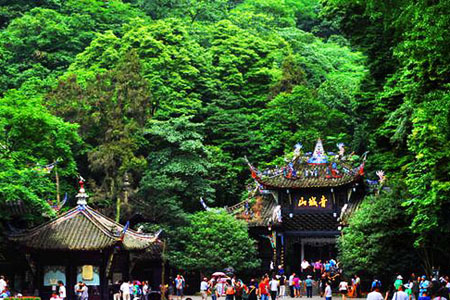
One day classic tours of Chengdu to Mt. Qingchengshan and Dujiangyan Dam will show tourist the profound of ancient Chinese wisdom and culture in harmony relation with the world. ......
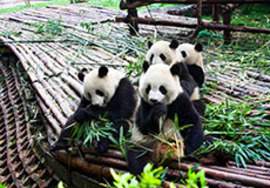
The most classic one day Chengdu tours will bring tourist to Chengdu Giant panda garden and Leshan giant buddha with private travel guide and car in Chengdu, extremely convenient and easy!......
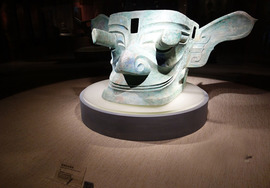
One days best Chengdu tours bring tourist to Sanxingdui museum and giant panda garden with private guide and car, making your tour in Chengdu easy. ......
This panda volunteer work provide tourist with one days unique experience of Panda volunteer project works and bring them an intimate touch with Giant pandas, also the best way to learn deep about pand......
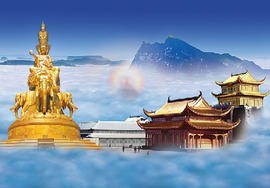
It is tour from the only one operator in Chengdu tours market offering Emeishan and Leshan tours by bullet train. Our highlights including Leshan Giant Buddha and Mt Emeishan. ......

